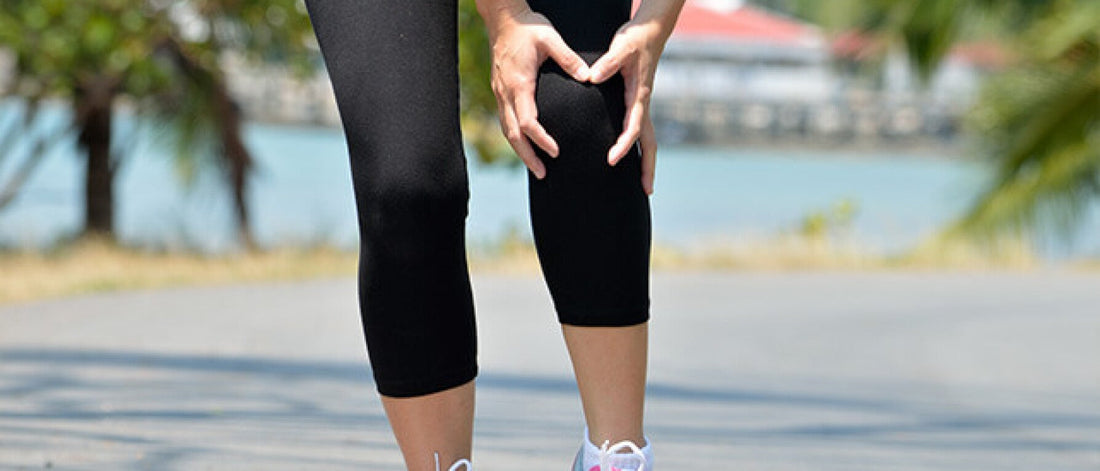If you have osteoarthritis (OA) in your knees, you’re not alone. Of the weight-bearing joints, knees are the most commonly affected; by age 85, nearly one in every two people may develop symptomatic knee OA. There are lifestyle, diet, and supplement choices that can help keep your knees as healthy as possible (see 3 Considerations for Maintaining Healthy, Happy Joints). In addition, here are four approaches that can help to protect and reduce the loading forces on your knees, which is one of the major risk factors for the development and progression of knee OA.
Ways to balance the weight on your knees while walking can include:
Exploring these four options, in addition to eating and sleeping well and exercising appropriately, could go a long way in helping your knees feel as healthy as possible in the long run.
*Editor’s Note: The information in this article is intended for your educational use only; does not necessarily reflect the opinions of the Chopra Center's Mind-Body Medical Group; and is not a substitute for professional medical advice, diagnosis, or treatment. Always seek the advice of your physician or other qualified health providers with any questions you may have regarding a medical condition and before undertaking any diet, supplement, fitness, or other health program.
1. Strengthen Muscles Around Your Knee
Developing and maintaining strong leg muscles can help decrease knee pain and stiffness, increase mobility and strength, and decrease overall arthritis activity. Talk to your doctor before beginning an exercise program, and discontinue with the onset of any pain or new symptoms. With OA, it is best to limit knee-bending exercises, such as squats (if you do squats, try to keep your shins vertical to reduce loading forces). Instead, focus on straight-legged movements to protect your knees, such as the following:- Front leg raises (strengthens your quadriceps). Lie on your back. With a straight leg, contract the muscle on the front of your thigh and lift to a 45 degree angle. Slowly lower. Repeat on each leg 15 times.
- Back leg raises (strengthens your gluteus muscles). Lie on your stomach with a pillow under your hips to support your back. Squeeze your buttocks and lift your straight leg slightly up. Slowly lower. Repeat on each leg 15 times.
- Calf raises (strengthens your gastrocnemius). Stand close a chair or wall for balance as needed with your feet shoulder-width apart. Keeping your legs straight, raise slowly up on to your toes and then back down. For a challenge, try this on one leg. Repeat 15 times.
2. Wear Minimalist Shoes or Go Barefoot
Wearing minimalist shoes—or no shoes at all—may help significantly decrease the load on your knees. Landing on the ball of your foot with each stride and subsequently touching down with your heel, rather than landing on your heel, can allow the joints of your foot to absorb more of the shock from each stride and protect your knees. Avoid shoes with heels, if at all possible.3. Modify Your Gait
Osteoarthritis located on the inner side of the knee is 10 times more common than other forms of knee OA, largely because the inner knee experiences a weight-bearing force up to three times of the lateral side. Changing your gait to distribute your weight more evenly across your entire knee can reduce loading forces on the inner knee by 20 percent, ultimately reducing pain, increasing mobility, and slowing the progression of OA.Ways to balance the weight on your knees while walking can include:
- Walking more slowly
- Widening your stance
- Pointing your toes outward
- Increasing the side-to-side sway of your torso.
4. Use an Off-Loading Knee Brace
Off-loading braces can be tailored to reduce the load on your inner or outer knee. It is important to work with your doctor to determine which side of your knee is affected by OA before using an unloading brace—using the wrong kind could make your condition worse. These braces can also cause discomfort and side effects. Unloading braces include:- Valgus knee braces, which can help decrease the pain and disability associated with inner knee OA.
- Varus knee braces, which have been shown to help decrease pain and increase stability with outer knee OA.
Exploring these four options, in addition to eating and sleeping well and exercising appropriately, could go a long way in helping your knees feel as healthy as possible in the long run.
*Editor’s Note: The information in this article is intended for your educational use only; does not necessarily reflect the opinions of the Chopra Center's Mind-Body Medical Group; and is not a substitute for professional medical advice, diagnosis, or treatment. Always seek the advice of your physician or other qualified health providers with any questions you may have regarding a medical condition and before undertaking any diet, supplement, fitness, or other health program.






















